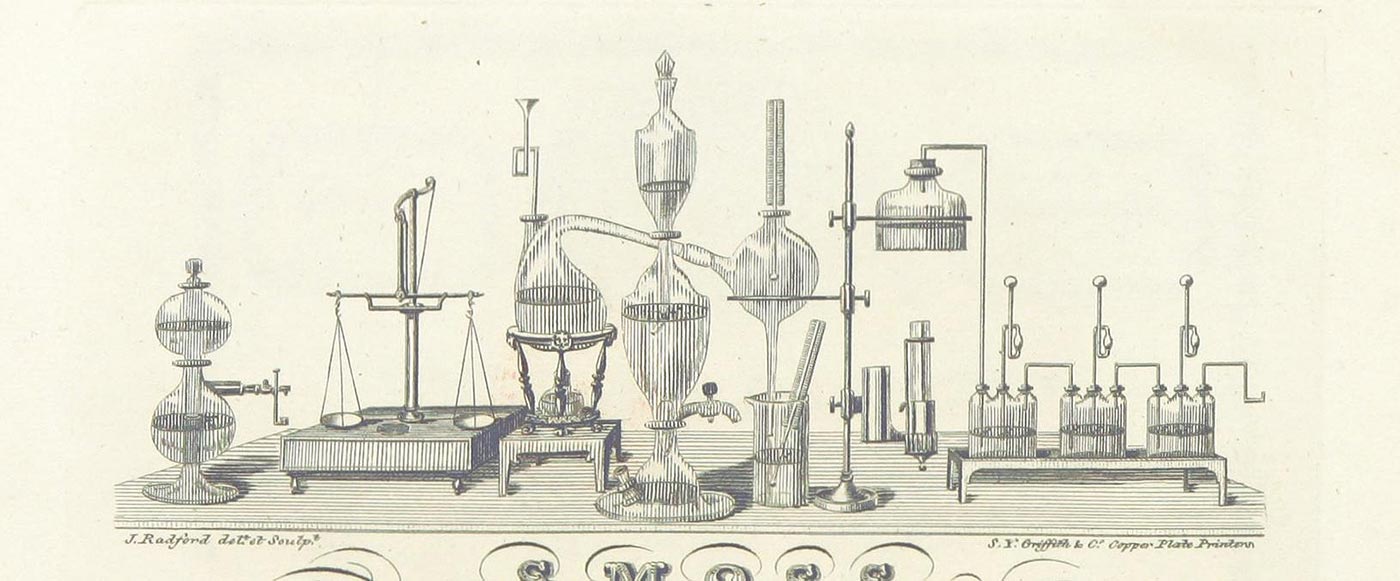BioBuilder: Rethinking the biological sciences as engineering disciplines
Moving biology out of the lab will enable new startups, new business models, and entirely new economies.
 Illustration of chemistry equipment (source: The British Library via Flickr)
Illustration of chemistry equipment (source: The British Library via Flickr)
What needs to happen for the revolution in biology and the life sciences to succeed? What are the preconditions?
I’ve compared the biorevolution to the computing revolution several times. One of the most important changes was that computers moved out of the lab, out of the machine room, out of that sacred space with raised floors, special air conditioning, and exotic fire extinguishers, into the home. Computers stopped being things that were cared for by an army of priests in white lab coats (and that broke several times a day), and started being things that people used. Somewhere along the line, software developers stopped being people with special training and advanced degrees; children, students, non-professionals — all sorts of people — started writing code. And enjoying it.
Biology is now in a similar place. But to take the next step, we have to look more carefully at what’s needed for biology to come out of the lab.
It’s easy to look at synthetic biology and say “Cool! Glowing Plants! Curing diabetes by designing cells that monitor and produce insulin! De-extincting Wooly Mammoths!” But that’s not what synthetic biology is really about. Not that synthetic biologists aren’t interested and involved in those projects; the goals of synthetic biology are deeper. How can we turn genetic manipulation from science to engineering? What does that even mean?
The problem is that we can do all of that stuff now, in a lot of labs (maybe not the mammoth, but that doesn’t present any insurmountable obstacles), but we can’t do it reliably. We can’t do it consistently. We can make changes in an organism’s DNA, but we’re never 100% sure what the results will be.
Contrast that with electronics. Very early in the 20th century, if you experimented with electronics, you had to build all your own parts. Spark gaps, crystal detectors, hand-wound coils, and much more. If you built something, there was a decent chance that it would work, but only a decent chance. Modern electronics started when we evolved from hand-made parts to standardized parts that had predictable properties, standardized ways of connecting parts, and standardized circuits for specific functions (amplifiers, logic gates, and so on). As a result, you can go into a store, buy an iPhone, and be 100% sure that it will work. There’s no chance that, when you start the phone, it will go up in smoke or sit like a lump.
Biology has to make the same transition if it’s to move from science and the laboratory to engineering. We can do a lot of things, but we don’t know how to do those things reliably. We know how to mess around with genetics; we don’t yet have a catalog of standard parts that will do exactly what they promise 100% of the time. We’re working on that. We know how to insert genes into organisms, but we don’t know how to build genetic circuits that are as reliable as the electronics in your phone or laptop. Any engineer knows that there are many ways to solve a problem, but those different solutions aren’t equally effective. Any biologist knows that there are many ways to modify a metabolic pathway to achieve some goal, but we don’t yet know which solutions are the most reliable or efficient.
That’s what synthetic biology, and BioBuilder, are all about. Lab work is important. BioBuilder includes a lot of experiments, and can be used as a manual for experiments in school, at home, or in a DIYBio hackerspace. But important as the lab work is, BioBuilder is really about rethinking the biological sciences as engineering disciplines. Can we make biology as reliable as computing? Can we understand how to engineer DNA so that, when we insert that DNA into an organism, it will have precisely the effect we want? Can we come up with a DNA-encoded light generating device with specifications as reliable as the 47K, 1/4W resistors I can order from Mouser? And if so, can I engineer microbes that will reliably attack cancer cells, detect diseases, manufacture building materials, and more? Can these become products, not just experiments and research projects? Rethinking biology starts in the lab, but it ends with new startups, new business models, and entirely new economies.
We’re getting there. BioBuilder is all about the “getting there,” and inviting everyone — students, teachers, amateurs — along in the process.
